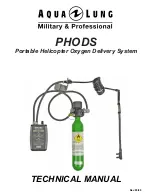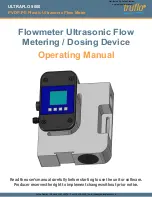
Concepts and Features
R&S
®
ZNC
44
User Manual 1173.9557.02 ─ 13
The figure above is sufficient for the definition of S-parameters but does not necessarily
show the complete signal flow. In fact, if the source and load ports are not ideally matched,
part of the transmitted waves are reflected off the receiver ports so that an additional a
2
contribution occurs in forward measurements, and an a
1
contribution occurs in reverse
measurements. The 7-term calibration types Txx take these additional contributions into
account.
The scattering matrix links the incident waves a
1
, a
2
to the outgoing waves b
1
, b
2
accord-
ing to the following linear equation:
2
1
22
21
12
11
2
1
a
a
S
S
S
S
b
b
The equation shows that the S-parameters are expressed as S
<out>< in>
, where <out> and
<in> denote the output and input port numbers of the DUT.
Meaning of 2-port S-parameters
The four 2-port S-parameters can be interpreted as follows:
●
S
11
is the input reflection coefficient, defined as the ratio of the wave quantities b
1
/
a
1
, measured at PORT 1 (forward measurement with matched output and a
2
= 0).
●
S
21
is the forward transmission coefficient, defined as the ratio of the wave quantities
b
2
/a
1
(forward measurement with matched output and a
2
= 0).
●
S
12
is the reverse transmission coefficient, defined as the ratio of the wave quantities
b
1
(reverse measurement with matched input, b
1,rev
in the figure above and a
1
= 0) to
a
2
.
●
S
22
is the output reflection coefficient, defined as the ratio of the wave quantities b
2
(reverse measurement with matched input, b
2,rev
in the figure above and a
1
= 0) to
a
2
, measured at PORT 2.
Meaning of squared amplitudes
The squared amplitudes of the incident and outgoing waves and of the matrix elements
have a simple meaning:
Measurement Results
















































